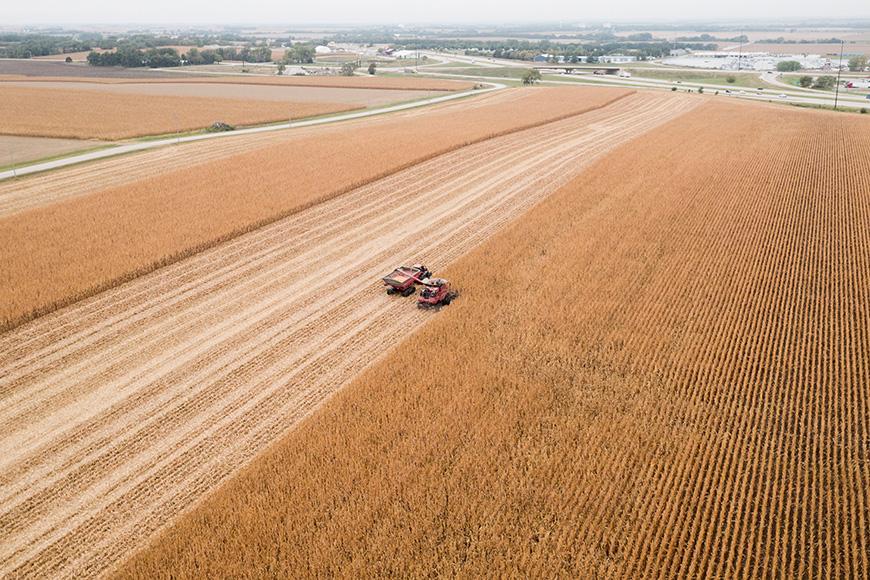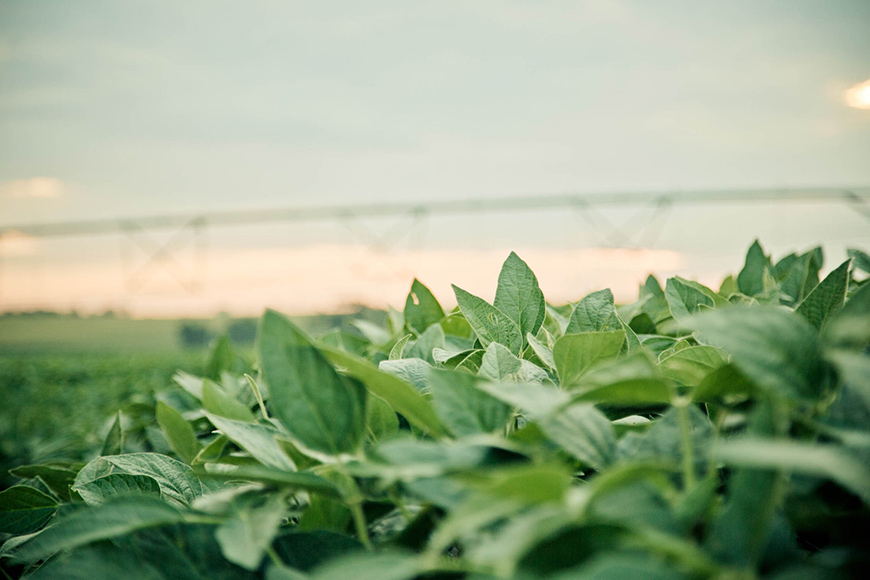3 Late-Season Tips to Help Maximize Crop Performance
.jpeg?ext=.jpeg)
Most of your in-season management decisions have been made and your products applied. However, there are still opportunities to maximize your crop’s performance further. These are my top three recommendations for growers looking to finish the season strong with a few final strategic investments.
It’s important to note that not every hybrid responds to fungicides in a profitable way. Fortunately, response-to fungicide (RTF) scores can help you determine which hybrids to focus your investment on. The scores are based on randomized, replicated research trials conducted at WinField United Answer Plot® locations and indicate which hybrids have high, medium and low responses to fungicides. Your local WinField United retailer can share those RTF scores and help you set a solid strategy based on the response of each hybrid.
For the acres where you decide to apply a fungicide, add a drift and deposition aid like MasterLock® adjuvant to the tank. A fungicide can’t go to work if it never reaches the target. MasterLock adjuvant helps improve spray deposition, canopy penetration and droplet adhesion to help get more product where it’s needed. MasterLock adjuvant is an investment that’s been tested and proven to pay off, increasing corn yields by an average of 5.7 bushels/acre when tank mixed with a fungicide.1
In a perfect world, it’s best to take a tissue sample to confirm a micronutrient deficiency. That way, you and your WinField United retailer can get very specific in the application recipe. However, if you don’t have the time or labor to execute a tissue sample and analysis, boron is the best bet at this time in the season, especially if you’re experiencing drought conditions.
MAX-IN® Boron micronutrient is an excellent choice that can be included in your fungicide tank mix. It also contains CornSorb® technology to promote the movement of micronutrients into internal structures to increase plant uptake efficiencies.
I recommend applying your last 10% of nitrogen with sulfur because both are leachable nutrients. Like RTF scores, we also have a scoring system for response-to nitrogen (RTN), so you can prioritize your hybrids and make sure you’re putting your investment where it will make the most impact.
While all these strategies can be beneficial in the right situations, evaluate your fields and the current conditions in your area. Consider each option’s costs and benefits and work with your local WinField United retailer to develop an effective plan.
1WinField United, 14 studies, 8 states, all fungicides, 2012–2017. Compared to a fungicide application with no MasterLock added.
All photos are either the property of WinField United or used with permission.
© 2023 WinField United. Important: Before use always read and follow label instructions. Crop performance is dependent on several factors many of which are beyond the control of WinField United, including without limitation, soil type, pest pressures, agronomic practices and weather conditions. Growers are encouraged to consider data from multiple locations, over multiple years and to be mindful of how such agronomic conditions could impact results. Answer Plot, CornSorb, MasterLock, MAX-IN and WinField are trademarks of WinField United. All other trademarks are the property of their respective owners.
1. Invest in Fungicides
Fungicides are most traditionally used for disease control, but they can also benefit overall plant health, even when there is low disease pressure. Strobilurin fungicides help suppress ethylene production, which is a hormone that facilitates senescence and causes plant cells to die off. By suppressing its production, strobilurin fungicides help plants stay green and photosynthesize longer, which can be especially helpful in dry conditions.It’s important to note that not every hybrid responds to fungicides in a profitable way. Fortunately, response-to fungicide (RTF) scores can help you determine which hybrids to focus your investment on. The scores are based on randomized, replicated research trials conducted at WinField United Answer Plot® locations and indicate which hybrids have high, medium and low responses to fungicides. Your local WinField United retailer can share those RTF scores and help you set a solid strategy based on the response of each hybrid.
For the acres where you decide to apply a fungicide, add a drift and deposition aid like MasterLock® adjuvant to the tank. A fungicide can’t go to work if it never reaches the target. MasterLock adjuvant helps improve spray deposition, canopy penetration and droplet adhesion to help get more product where it’s needed. MasterLock adjuvant is an investment that’s been tested and proven to pay off, increasing corn yields by an average of 5.7 bushels/acre when tank mixed with a fungicide.1
2. Apply Foliar Micronutrients
Micronutrients like boron are essential at this point in the season. Without boron, reproductive structures don’t function effectively. A boron deficiency could reduce pollen viability and weaken silks, limiting grain production.In a perfect world, it’s best to take a tissue sample to confirm a micronutrient deficiency. That way, you and your WinField United retailer can get very specific in the application recipe. However, if you don’t have the time or labor to execute a tissue sample and analysis, boron is the best bet at this time in the season, especially if you’re experiencing drought conditions.
MAX-IN® Boron micronutrient is an excellent choice that can be included in your fungicide tank mix. It also contains CornSorb® technology to promote the movement of micronutrients into internal structures to increase plant uptake efficiencies.
3. Consider a Final Macronutrient Application for Irrigated Acres
A corn crop uses 50% of its total nitrogen supply between V10 and R2. If you have the luxury of irrigation, consider a macronutrient application to set your crop up for success through grain fill. Nitrogen may be especially vulnerable to leaching losses on sandy, irrigated acres, so focusing on supplemental applications could increase yield potential.I recommend applying your last 10% of nitrogen with sulfur because both are leachable nutrients. Like RTF scores, we also have a scoring system for response-to nitrogen (RTN), so you can prioritize your hybrids and make sure you’re putting your investment where it will make the most impact.
While all these strategies can be beneficial in the right situations, evaluate your fields and the current conditions in your area. Consider each option’s costs and benefits and work with your local WinField United retailer to develop an effective plan.
1WinField United, 14 studies, 8 states, all fungicides, 2012–2017. Compared to a fungicide application with no MasterLock added.
All photos are either the property of WinField United or used with permission.
© 2023 WinField United. Important: Before use always read and follow label instructions. Crop performance is dependent on several factors many of which are beyond the control of WinField United, including without limitation, soil type, pest pressures, agronomic practices and weather conditions. Growers are encouraged to consider data from multiple locations, over multiple years and to be mindful of how such agronomic conditions could impact results. Answer Plot, CornSorb, MasterLock, MAX-IN and WinField are trademarks of WinField United. All other trademarks are the property of their respective owners.





